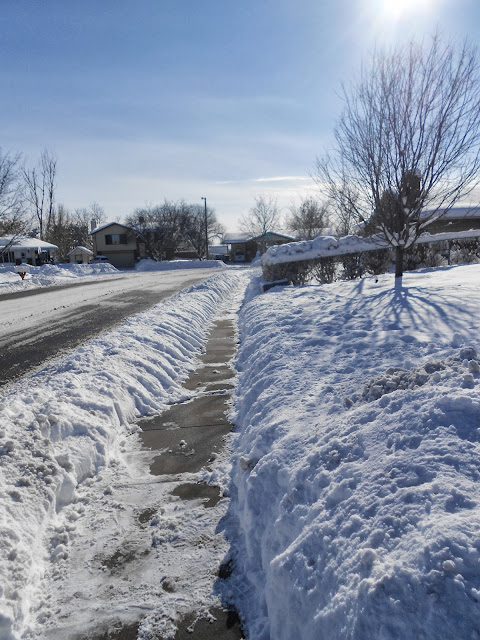Weber County's first Christmas observer also traveled up Weber Canyon and then from Peterson to "Ogden's Hole" in an expedition that began New Year's Day. He may have been near today's Trappers Loop Highway. Photo by Whitney Arave.
Who was the
first white person (or persons) to celebrate Christmas in Weber County, if not all of Utah?
Was it:
A. Miles Goodyear, in Ogden, 1845.
B. Mormon settler James Brown and
company, in Ogden, in 1847.
C. John C. Fremont and/or Kit Carson in 1843.
D. None of the above.
If you answered “D,” you would be correct.
Surprisingly, it was a mountain man and trapper, Osborne Russell, who
celebrated the holiday, Dec. 25, first in Weber County in 1840.
Russell (1814-1892) was most famous as a political leader who later
helped form the government of the State of Oregon.
He kept
a detailed journal of his nine years (1834-1843) in the Rocky Mountains and his
account is a fascinating read, which predates John C. Fremont and Kit Carson’s
visit in 1843 by almost 3 years.
He outlines his Christmas holiday as taking place near where the “Weaver”
River (Weber River) empties into the Great Salt Lake. By that description, he
most likely would have been in today's Hooper (or perhaps West Haven) for the holiday season.
Russell spent the holidays in an Indian lodge, in the company of a French
Man, his Native America wife and their child. In nearby accommodations were
other Indians and children.
“It was agreed on by the party to prepare a
Christmas dinner …” Russell wrote in his journal.
He noted
that his understanding of French and Indian language was helpful, as only three
others knew English and that was a pretty sketchy proficiency.
At about
1 p.m., the group sat down to Christmas dinner, “in the lodge where I staid
which was the most spacious being about 36 ft. in circumference at the base
with a fire built in the center …” Russell wrote.
What did
they eat?
“The first dish that came on was a large tin
pan 18 inches in diameter rounding full of Stewed Elk meat,” Russell wrote of
the 1840 holiday feast.
The group had found a
large group of elk, out west, by the lake, wintering in the thickets of wood
and brush by the river.
“The next dish was similar
to the first heaped up with boiled Deer meat (or as the whites would call it
Venison a term not used in the Mountains),” Russell continued.
“ The 3d and 4th dishes
were equal in size to the first containing a boiled flour pudding prepared with
dried fruit accompanied by 4 quarts of sauce made of the juice of sour berries
and sugar Then came the cakes followed by about six gallons of strong coffee
already sweetened with tin cups and pans to drink out of large chips or pieces
of Bark Supplying the places of plates,” Russell wrote in his journal.
He also explained that
eating did not commence until the word was given by the landlady. Then,
conversation was expected of all.
“The principal topic which
was discussed was the political affairs of the Rocky Mountains The state of
governments among the different tribes …” Russell wrote.
What
about after dinner?
“Dinner
being over the tobacco pipes were filled and lighted while the Squaws and
children cleared away the remains of the feast to one side of the lodge where
they held a Sociable tite a tite over the fragments. After the pipes were
extinguished all agreed to have a frolic shooting at a mark which occupied the
remainder of the day,” Russell ended his holiday account.
“The
route was very difficult and in many places difficult travelling over high
points of rocks and around huge precipices on a trail just wide enough for a
single horse to walk in …” Russell write of Weber Canyon.
He likely camped in the Peterson
area, where the snow was some 5 inches deep. It snowed another 8 inches that
night. The next morning, he went north over rolling hills into Ogden’s Hole
(today’s Ogden Valley), where the snow was 15 inches deep. He spotted a herd of
100 elk and shot one for food.
The next day, he returned to where he had spent Christmas and remained
there for the rest of January.
There is much more to Russell’s early account of the Ogden area,
including descriptions of Fremont and Antelope islands.
His account can be read on-line at: http://user.xmission.com/~drudy/mtman/html/ruslintr.html
(Special thanks to Terry Bennett of Layton for suggesting this first
Christmas holiday account).
Also, the offensive word of today -- "squaw" -- was also not changed, but left as it was written ... for historical accuracy's sake and nothing else intended.
(-Written by Lynn Arave and originally published in the Ogden Standard-Examiner on Dec. 20, 2013.)
-NOTE: The author, Lynn Arave, is available to speak to groups, clubs, classes or other organizations about Utah history at no charge. He can be contacted by email at: lynnarave@comcast.net












